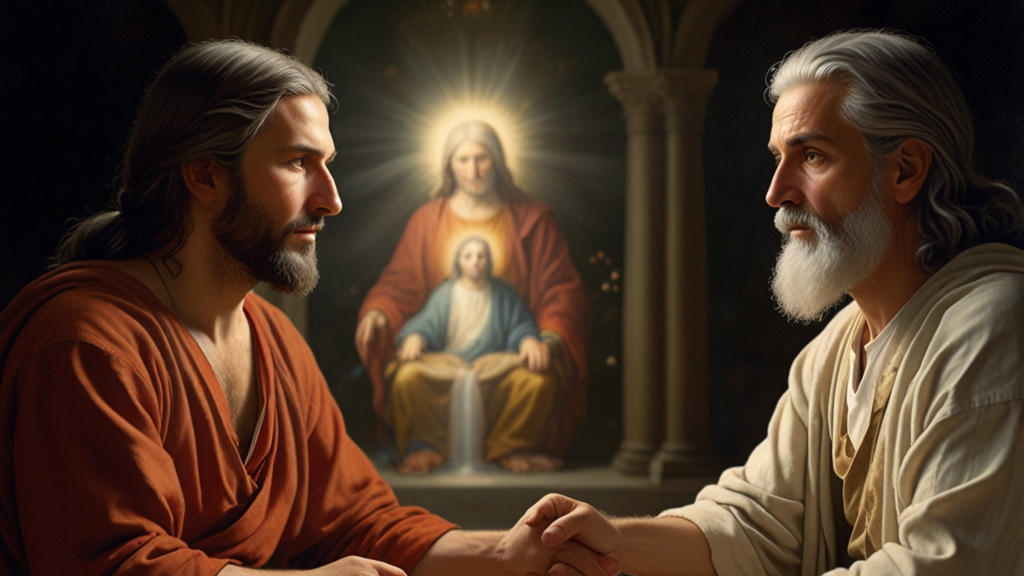Introduction
The New Testament, a cornerstone of Christian faith, has been a subject of scrutiny and debate for centuries. With its texts being interpreted in various ways, myths and misconceptions have inevitably emerged. In this article, we will debunk some of the most prevalent myths, shedding light on what's fact and what's fiction.
Myth 1: The Gospels Were Written by the Disciples
One of the most common myths is that the Gospels—Matthew, Mark, Luke, and John—were written by the direct disciples of Jesus. While these texts bear the names of these figures, historical scholarship suggests otherwise. The Gospels were likely written by followers of these figures, decades after the events they describe.
“The Gospel authors are traditionally identified with the apostles and early followers of Jesus. However, most scholars agree that the texts were written by unknown Christians for communities in different locations.”
This timeline discrepancy underscores the importance of contextual and historical analysis when approaching ancient texts.
Myth 2: Jesus Was Born on December 25th
The celebration of Christmas on December 25th leads many to believe this is the actual birthdate of Jesus. However, there is no biblical evidence to support this date. The choice of December 25th coincides with the Roman pagan festival of Saturnalia, and some scholars suggest it was selected to help integrate Christian and pagan traditions.
Additionally, the New Testament provides very few clues about the time of year Jesus was born. Luke's account describes shepherds “living out in the fields,” which suggests a season other than winter for the nativity.
Myth 3: Mary Magdalene Was a Prostitute
Mary Magdalene is often mistakenly referred to as a repentant prostitute. This myth traces back to a sermon by Pope Gregory I in 591 AD, where he conflated her with an unnamed sinful woman in the Gospel of Luke. The New Testament, however, does not identify Mary Magdalene as a prostitute. Rather, she is portrayed as a devoted follower of Jesus who was present at both his crucifixion and resurrection.
“Mary Magdalene's significance in early Christianity is profound, and reducing her to the role of a reformed sinner undermines her true importance.”
Modern scholarship aims to reclaim her true identity, recognizing her as a key figure in early Christian traditions.
Myth 4: The New Testament Condemns Homosexuality
Interpretations of the New Testament's stance on homosexuality have fuelled much debate. The most cited passages come from Paul's letters, particularly in Romans and Corinthians. However, these interpretations often overlook the cultural and historical contexts in which these texts were written.
The Greek terms used in these passages are complex and their meanings have evolved over time. Some scholars argue that what Paul condemns is not consensual same-sex relationships but exploitative and non-consensual behaviors prevalent in Greco-Roman society.
Myth 5: The Bible Clearly Defines the Trinity
The concept of the Trinity—Father, Son, and Holy Spirit as one God— is a cornerstone of Christian doctrine. However, the New Testament does not provide a clear and unified doctrine of the Trinity. The term “Trinity” itself does not appear in the New Testament. The development of this doctrine was a gradual process that took several centuries and was formalized in the ecumenical councils of the early Church.
The intricate relationship between the Father, Son, and Holy Spirit was heavily debated among early Christians, finally culminating in the Nicene Creed in 325 AD.
Conclusion
The New Testament is a complex and multifaceted text that has been interpreted in numerous ways throughout history. While it serves as a spiritual guide for millions, understanding its content requires a nuanced approach that considers historical, cultural, and linguistic contexts. By debunking these myths, we can pave the way for a more informed and respectful engagement with this sacred text.







